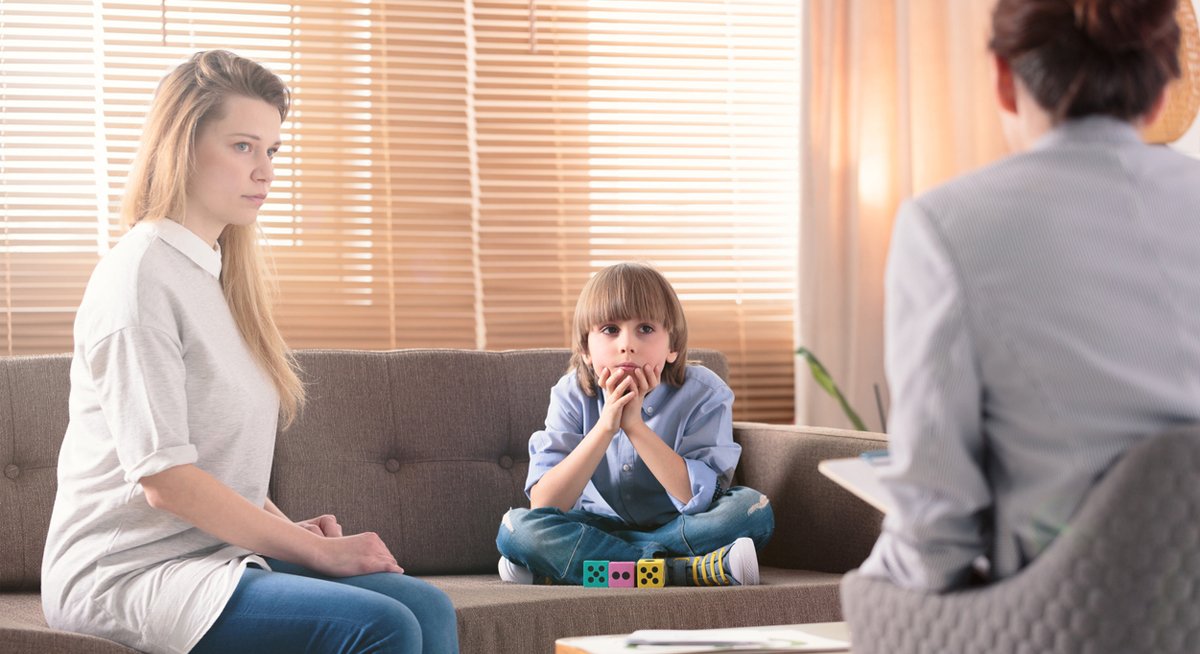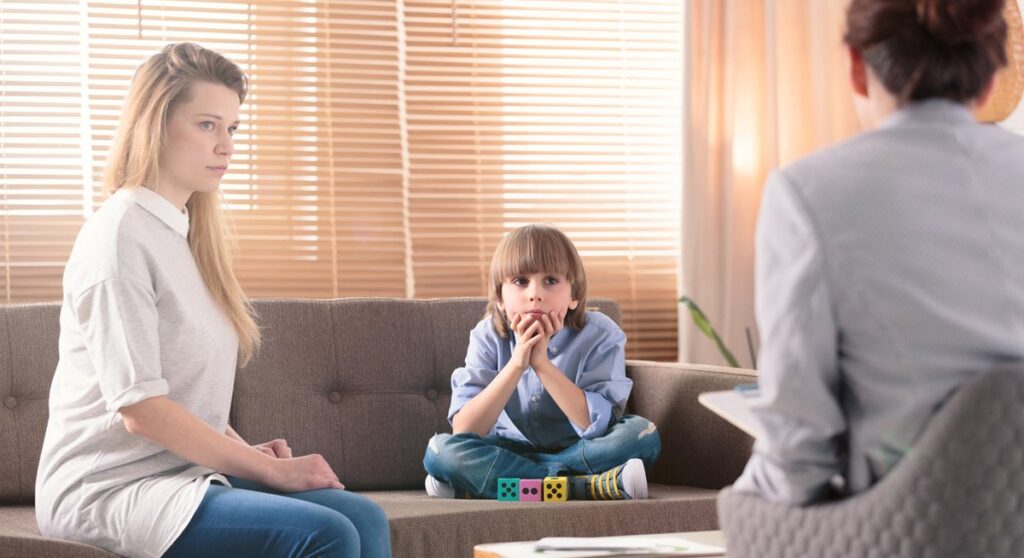Hot Topics
The A-B-C’s of Court Ordered Visitations

Supervised Visitation Programs provide the courts with an opportunity to allow noncustodial parents to maintain contact with their children in a safe and neutral setting with trained professionals observing and documenting. The purpose of visitation is to improve the parent-child relationship. Supervisors may actively encourage the parent-child relationship by providing age-appropriate activities, helping parents develop or enhance parenting skills when necessary, modeling appropriate interactions with the child and discouraging inappropriate parental conduct.
Circumstances in which a judge may order supervised visitation:
- There is a history of substance abuse
- There is a threat that the parent may abduct the child
- There is a history of neglect/abuse or domestic violence
- The parent has a mental illness that poses a risk to the child
- To reintroduce a child and parent after an extended period of separation
- If the parent and child never had an existing relationship
- Parenting skills are lacking
- To give the parent an opportunity to rectify any issues that were identified as damaging to unsupervised visitation.
- Allegations of abuse, especially if a child is showing signs of abuse after visits with a parent, such as stuttering, bed-wetting, unusual behavior, or poor school performance.
- A parent is in prison or recently released from prison.
- A parent does not have suitable living arrangements, for example, if they are homeless or live in a hazardous area.
- If a child requires administering of medicines or treatments, and the parent has a history of failing to administer medications
Types of Supervision
- One-to-one supervision: Visits in which one monitor/supervision specialist is assigned to a single family during a scheduled visit are often described as having one-to-one supervision.
- Supervised visitation is contact between a parent and a child overseen by a trained third party in a controlled environment which enhances the safety of all vulnerable parties. The supervisor can be a family member or friend if both parents approve of the person chosen, and the court carefully vets the person. (“How Supervised Visitation Works, TalkingParents”)
- Therapeutic supervision: may only be provided by order of the court and only by licensed mental health professionals who are also specifically trained to provide supervised visitation. Must have a therapeutic goal for visits.
Orders granting supervised visitation can vary depending on what the court finds appropriate. They can be very restrictive and state that a parent can only spend time with a child at a specified location. An order may also be more lenient and allow the parent to have visitation with the child in their home.
Supervised Visitation Programs provide the courts with written documenattion regarding supervised contact. Supervised Visitation Programs do NOT make recommendations on timesharing.
Tips for Helping Children Before, During and After Visitations- some reasons for child distress before visits can include:
- The visit may be disrupting the child’s daily routines. Try to avoid breaks in routine as some children do not deal well with deviation in schedules.
- The child(ren) may be feeling overwhelmed by desire to see the birth parent.
- The child(ren) may be fearful that going to a visit means never returning to his/her custodial home.
- The child(ren) may be fearful of being separated from the custodial parent.
- The child(ren) may be picking up on the custodial parent’s distress and/or anxiety.
Custodial parents can help prepare children for visitations by:
- Scheduling visits around the child(ren)’s schedule. Avoid scheduling visits during school hours or during after-school activities.
- Helping the child(ren) decide on a transitional object to take to the visit to ease anxiety. For example, a stuffed animal, doll, favorite toy, or blanket. This will help child(ren) with emotional regulation.
- Helping the child(ren) pick what to wear to the visit.
- Helping the child(ren) draw a picture or make something to give to the non- custodial parent at the upcoming visit. This not only encourages a child’s creativity, but drawing/painting can reduce stress and can be another form of communication for a child to express his/her feelings. The item the child made can be used a gateway to initating communication between the child(ren) and non-custodial parent.
What if the child(ren) refuse visitation with the non-custodial parent?
Reasons why child(ren) refuse visitation with the non-custodial parent can be unique to each child, however, some causes may include:
- Anxiety-It’s normal for children to miss one parent when they visit another.
- Child/Parental Manipulation- parents can intentionally and non- intentionally manipulate their children into not wanting to attend visitations. For example, a custodial parent can say “I really want you to stay,” “I don’t want you to go”, “I’m going to miss you” or make plans with other children or family members during visitation time that the child may not want to miss. Sometimes children can manipulate the custodial parent into not taking them for a parental visit so that they do not miss a school activity, sporting event, a party or other planned activity.
If your child is reluctant to visit, the custodial parent can try the following:
- Talk to the child(ren) about why they don’t want to visit.
- Listen, but don’t reinforce negative feelings. Avoid saying things like, “I am being forced to take you.” Avoid showing disapproval.
- Don’t force the child to tell you about their time with the other parent.
- Assure the child(ren) that both parents love them and want to spend time with them.
- Encourage child to do activities with the other parent doing activities child may already enjoy doing with the other parent (building, drawing, puzzles, etc).
- Notify the non-custodial parent of chil(ren)’s refusal as soon as possible, unless there are no contact, stay-away or restraining orders.
If the reason does not directly impact their safety or well-being, your child should attend visitations. (“What to Do If Your Child Refuses Visitation with the Other Parent,” Our Family Wizard.)
Non-Custodial parents can make visitations a positive experience. Here are some tips to help increase the visitation experience:
- Tailor activities to the age and developmental stage of the child(ren). If your child is older, it may be more appropriate to have conversations with your children, asking them about their schooling, friends, or helping them with their latest homework assignment.
- Tailor activities to your child(ren)’s interests. Bring an activity that you know your child(ren) like such as specific books or games.
- Plan activities that are appropriate for the length of your visit.
- Break down activities into smaller components. For example, try to read one chapter of a book per visit.
How can Custodial Parents help their child(ren) after visits?
- Pick the child up from the visits or be there to welcome them back home.
- Interact calmly with the birth parent in front of the child. Do not engage in conversations about court, money, child support, or ask a parent to agree to travel arrangements.
- Put the next visit date on the calendar with the child and encourage your child to look forward to the visit and speak positively about their upcoming time together.
To end supervised and therapeutic visitations, parents must return to court. The supervised parent must show the court that there has been a change in circumstances since the order was issued. For example, having positive visitation reports, completing court-ordered requirements, and implementing positive changes during the parent-child visitation time.
References:
How Supervised Visitation Works, Talking Parents, How Supervised Visitation Works | TalkingParehttps://talkingparents.com/parenting-resources/supervised-visitationnts
Karen Oehme, J.D., Ann Perko, J.D., Kirsten Castillo, MSW, Morgan Lodes, BSW, Clearinghouse on Supervised Visitation, A Training Manual for Florida’s Supervised Visitation Programs, 2017, https://familyvio.csw.fsu.edu/sites/g/files/upcbnu1886/files/documents/Supervised-Visitation-Manual-2017-Edition.pdf
What to do if your child refuses visitation with the other parent, Our Family Wizard, What to Do If Your Child Refuses Visitation with the Other Parent | OurFamilyWizard, https://www.ourfamilywizard.com/blog/what-do-if-your-child-refuses-visitation-other-parent#:~:text=If%20your%20child%20is%20refusing%20visitation%20with%20your,safety%20or%20well-being%2C%20your%20child%20should%20attend%20visitations
